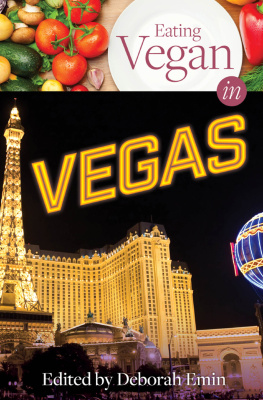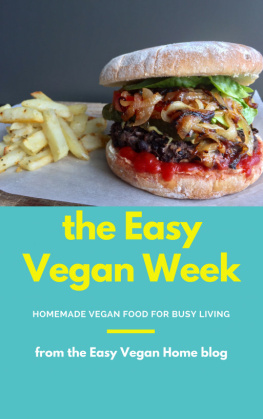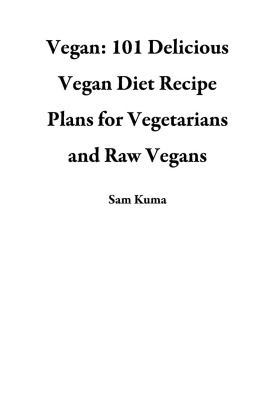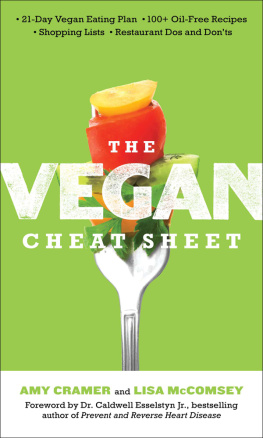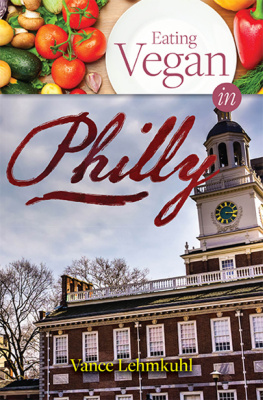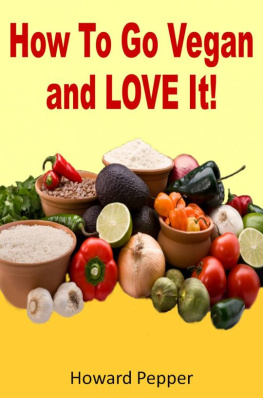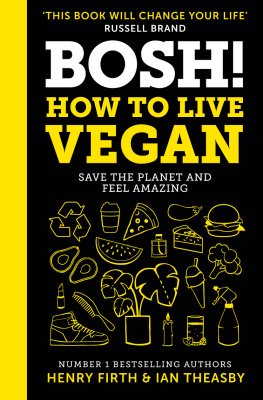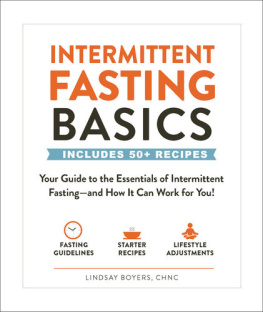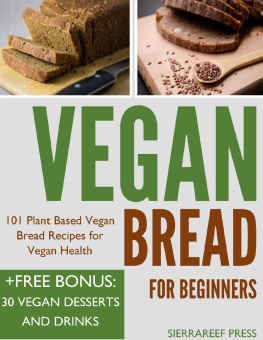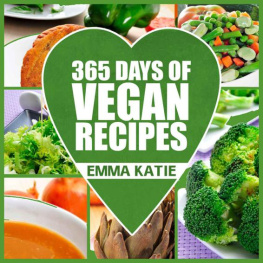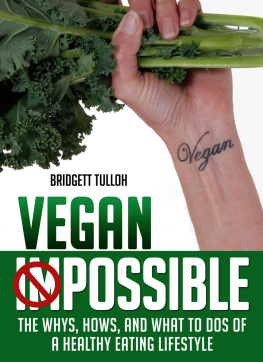Eating Vegan in Vegas
Vegan City Guides
Edited by
Deborah Emin

Copyright 2016 Deborah Emin
All rights reserved. No part of this book may be reproduced in any form or by any means without the prior written consent of the publisher, except by a reviewer who may quote brief passages in a review.
Published by Sullivan Street Press, Inc., New York
Digital ISBN: 978-0-9963491-4-7
Print ISBN: 978-0-9963491-5-4
Contents
By Evan Allen, MD
By William Bendik
By Mary Beth Horiai
By Mary Beth Horiai
By Marsala Rypka
Preface
Eating Vegan in Vegas has become the first volume in a new travel series, as the original author of the Eating Vegan in Vegas blog, Paul Graham, had always intended it to become. By changing the focus of how we talk about being vegan, Sullivan Street Press is pleased to embark on this series that will eventually cover all of North America, whether by city or by region.
The world has changed in so many ways since I met Paul in 2012. At that time, his groundbreaking blog was one of the first to look at how Las Vegas, the most unlikely Vegan hub imaginable, had become so successful. Through discussions with Paul about turning his blog into a book, I also became a vegan.
Now the worlds shifting has helped me take Paul Grahams idea to create a vegan city guide series and make it a reality. It is an honor to use Las Vegas as the first volume in the series.
As a frequent traveler, my wife and I have met lots of challenges while on the road. We have crisscrossed this country by train and by car. We camp out, we explore cities, we find ourselves in the middle of some very large states where there seem to be more acres of farmland than people, and in all these scenarios, we must eat.
What we have learned to do and what this travel series will help each traveler do is this: find the best, most appetizing food wherever you are. It is also necessary, as I see it, that we continue the bridge building no matter where we go.
For that reason, the series will focus on the points of interest that will be of particular interest to a vegan. For example, as you will see in the contents of this first volume, not all forty million yearly visitors to Las Vegas are interested in gambling.
For those who want to meet members of the animal rights community in Las Vegas, there is much to recommend in the chapter titled The Ethics of Veganism, with its helpful links to ongoing activities. If you want to see what the state of vegan medicine is, an insightful chapter on that issue by Dr. Evan Allen is available (Health). There are also chapters on the vegan celebrities associated with Las Vegas (Vegan Celebrities), the cottage industries that have arisen from this focus (It Takes a Village to Grow a Desert), and the work of environmentalists in the state as well (Desert to Food Hub).
Weve also included in this volume what can be called a different introduction to Las Vegas, and while this book is for vegans, it does not only focus on food. The food is great, and I hope youll enjoy as much of it as you have time for.
In honoring Paul Grahams foundational ideas about building bridges for a plant-based way of life, this series will celebrate the many ways this is occurring throughout North America.
Health
Evan Allen, MD
In October 2011 in Las Vegas, shortly after my son was born, my wife brought me into our living room to watch a movie. I was a practicing, board-certified family physician, and this movie, Forks over Knives, purported to show how amazingly people could improve their health by eating a plant-based diet. I thought I was already eating plant based. I had been a vegetarian my whole life, never voluntarily eating any beef, chicken, seafood, fish, oysters, or pork. I told my friends that I wouldnt eat anything that had ever wiggled on its own. So I was skeptical about the film because I had recently had a physical and it showed that I had a fatty liver, even with my vegetarian diet.
Watching the film changed me. The information was astounding and had never been presented to me in the past, even during my medical training. I was surprised to see Dr. John McDougall in the film. I remembered him from my years at Pacific Union College in Angwin, California. During those years, I had worked as a phlebotomist at St. Helena Hospital and Health Center, where Dr. McDougall ran a program. While I had seen the patients and drawn their blood, I had known little about the actual workings of his program. It came as a surprise to watch him describe his patients experiences in the film.
After watching the whole film, I became concerned because I thought patients would watch and come away with the idea that they could solve most of their chronic health problems simply by changing what they ate and drank. I certainly couldnt recall being tested on this material during my board exams, nor could I remember any questions about this in the weekly quizzes in my medical journals. Those exams and quizzes were mostly about pharmaceutical and surgical solutions to chronic problems.
Over the next few weeks, I began to research these findings. I expected to find lots of scientific data to support the position that modern medicine was doing the correct thing by focusing on drugs and surgery. What I found was almost the exact opposite. When there was scientific consensus, it was typically centered around the position of the film. Virtually every guideline that looked at diet in relation to disease recommended roughly the same thing: dont eat animal products (meat, seafood, dairy, eggs) and eat a diet that is almost entirely unrefined plant food.
After about a month, my wife and I decided to change how we ate.
During her pregnancy, she had put on seventy pounds and became what is called a gestational diabetic. Her blood pressure was dangerously high and went up to 200/100 after the delivery. When we changed how we ate, she lost all the weight within six months. Her blood pressure and blood sugar normalized.
I lost forty-five pounds over six months. Patients no longer recognized me. My asthma went away. I had chronic intestinal problems that were rapidly resolved. I was surprised at how much better I felt and at how much more energy and focus I had.
I decided to start making these dietary recommendations to patients. A few listened to what I had to say, and boy did they show me results!
Diabetics got off their medication. I had one patient who lost one hundred pounds in one year. Patients with intractable rashes got better. Sinus and allergy problems improved dramatically. But this advice only helped a small subset of my patients. Many heard my advice, but they either didnt or couldnt follow it due to their circumstances.
I decided to change my practice so I could achieve these dramatic results with a larger group of people.
One of the best things about living in Las Vegas is that it is a city that is friendly to people eating a plant-based diet. For us, however, the issue became more complicated because my wife suffers from severe migraine headaches that she gets when she consumes vegetable oils. For our health, and to keep her from getting migraines, we have to avoid foods that have vegetable oils in them. So while many of the restaurants that are available are great for people who want a plant-based meal, they didnt work well for us because of their use of these oils in most or all of their menu items.
Then we had a holiday party at a local restaurant, Panevino. Panevino is a gorgeous, five-star restaurant located just south of McCarran Airport.
Next page
